The will of the goddess is inscrutable, but with a mysterious dial and a few rules, you can fathom her mysterious ways all the same. Can you plant the crops in the right areas for a lot of divine brownie points?
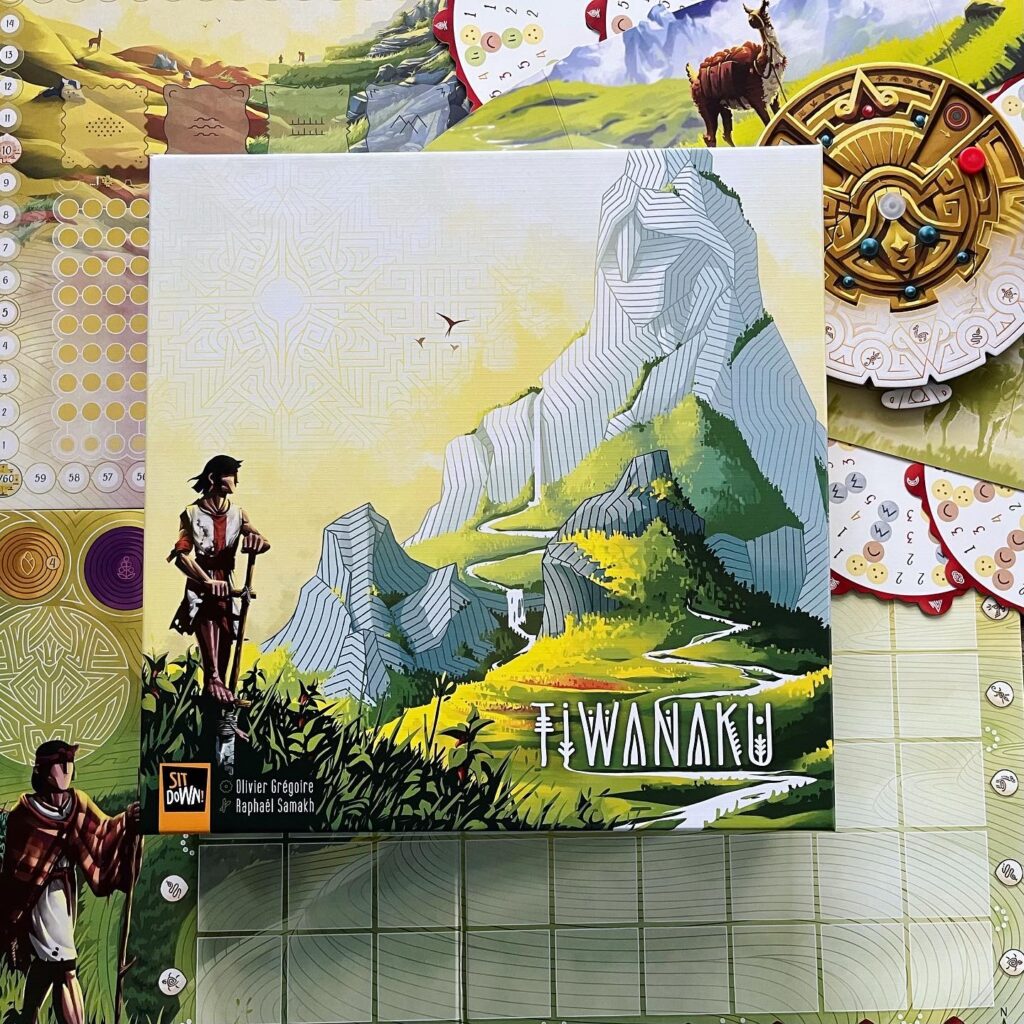
Background
Tiwanaku is the name for the archaeological discovery of the remains of a large city in present-day Bolivia. Tiwanaku was the presumed capital of a pre-Inca empire that probably lay to the south of the later Inca empire. The various peoples of the Andes worshipped the deity Pachamama, so did the peoples of Tiwanaku and also the Quechua. In the Quechua language, Pachamama means mother earth and in the game Tiwanaku, players take on the role of a group of Quechua who want to fall in good grace with the deity. Players must place the right crops in the right areas, but Pachamama’s instructions are not straightforward: players must discover the areas themselves and also deduce which crops to grow. Only a magical artefact knows how to predict the correct outcome.
Sit Down!, the publisher of Tiwanaku, usually guarantees highly innovative games with innovative game mechanics and techniques. Sit Down! was previously known for Magic Maze, a cooperative game where each player is assigned a certain action and where players have to play and take their actions at the same time, while having limited communication. Players are forced to work together due to the limited action options. You may also know Sit Down! from the game Dive, in which players have to ‘dive’ through a stack of transparent plastic cards with pictures to find pearls. The stack of cards creates a veritable ocean where players cannot see exactly where certain dangers (such as sharks) are. In the asymmetric dice game Rush Out!, with different scenarios, players roll dice as fast as possible to victory, and with Dexterity Jane, players do weird things with their fingers.
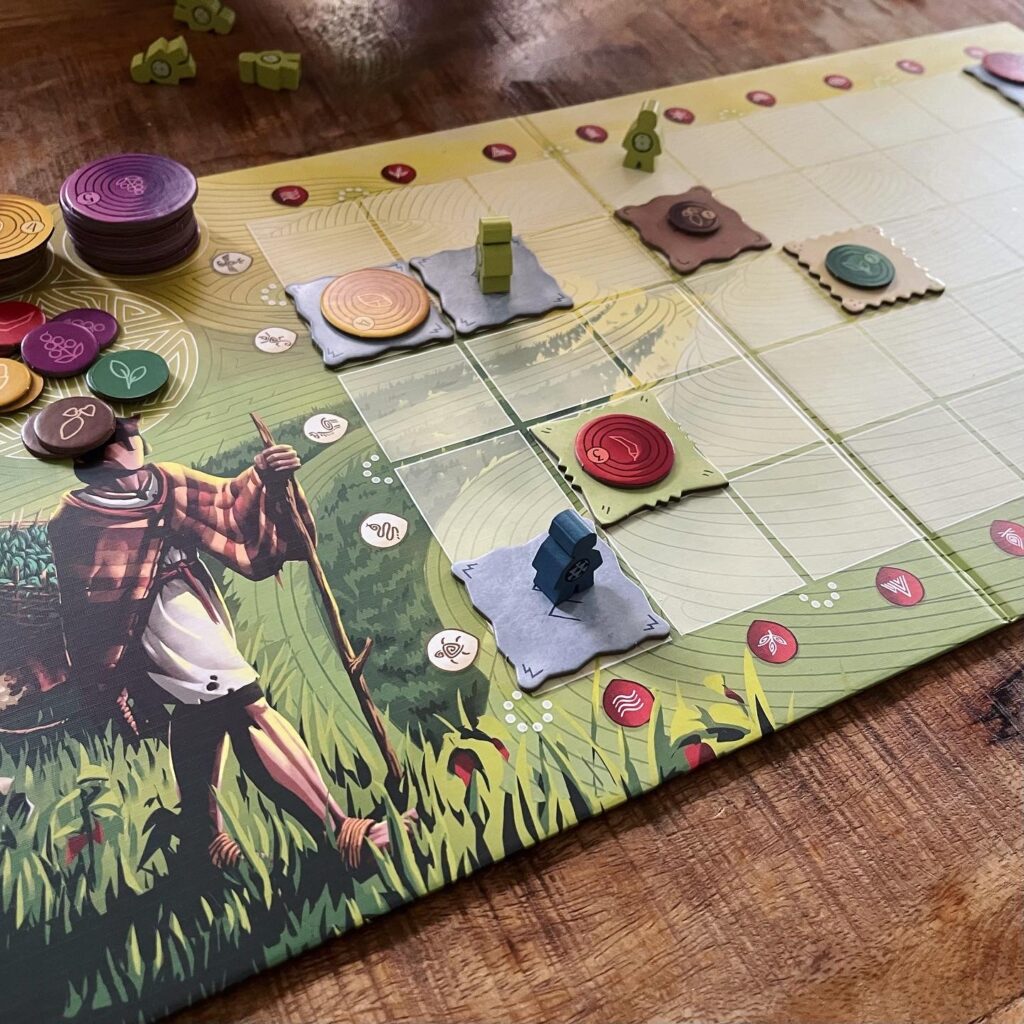
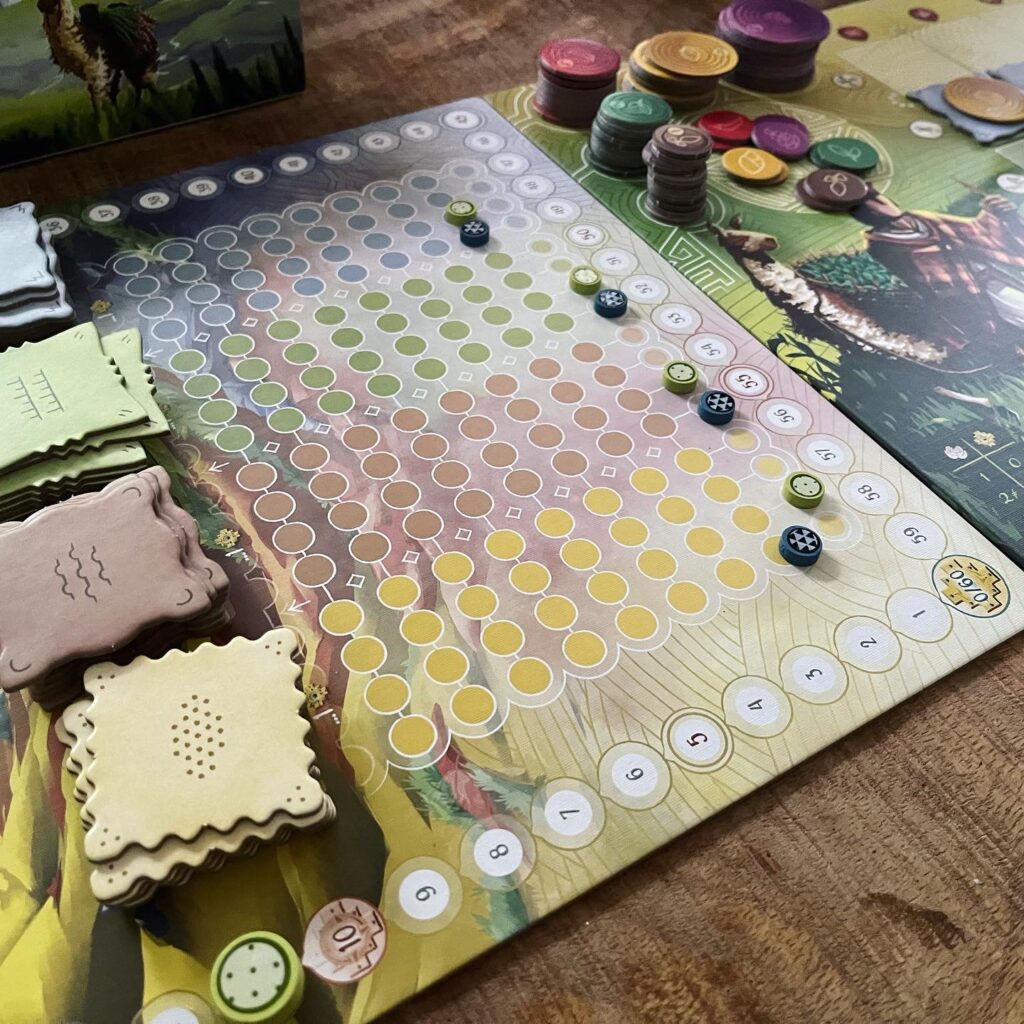
Tiwanaku also has an innovative mechanism with its spinning wheel that gives players limited information during the game when players start exploring new terrains or gives the solution when players want to grow a crop. This will become clearer later on in the review. The wheel is made of thick cardboard and one of the round scenario cards is placed in the wheel. The card can rotate and at the bottom of the wheel is a little lever. When the card and lever are in the right place, players can get information by opening one of the two boxes on the wheel. This system is ingenious.
Setup
At the beginning of the game, players choose their colour and take the parts in that colour. The two game boards are set up. Players choose a short or long scenario and take a scenario card. They front they are not allowed to look at, but the back describes the canario. Players take the indicated amount of terrain tiles and place terrain tiles and crops in the appropriate places on the game board. The scenario card is placed with the correct side in the wheel and players are ready to play.
Gameplay
During a turn, players can 1) move and discover or 2) predict crops. Players can move around the game board with their pawns, but may only move orthogonally and must stop if they land on an empty square or empty terrain tile. If players land on an empty square, they must explore. They enter their coordinates on the wheel (by turning the lever and map to the correct positions) and open the discovery square. This tells players which terrain tile to place on the game board. When players place a terrain tile, they also move the corresponding token in their colour up one level on the relevant score track. They receive points depending on the amount of tiles in their colour on that level: it is therefore smart to discover different terrains at the same time and, as a result, you have to slightly guess where possible terrains will appear.
If players choose to predict, they may attempt to guess the crop for empty terrain tiles where there is a pawn. They indicate a number of the crop and turn the wheel to the correct position based on their coordinates. They now open the discovery box and the correct crop is shown. They get points if they guessed the right crop and minus points if they guessed incorrectly. If they predict incorrectly, their turn is over immediately.
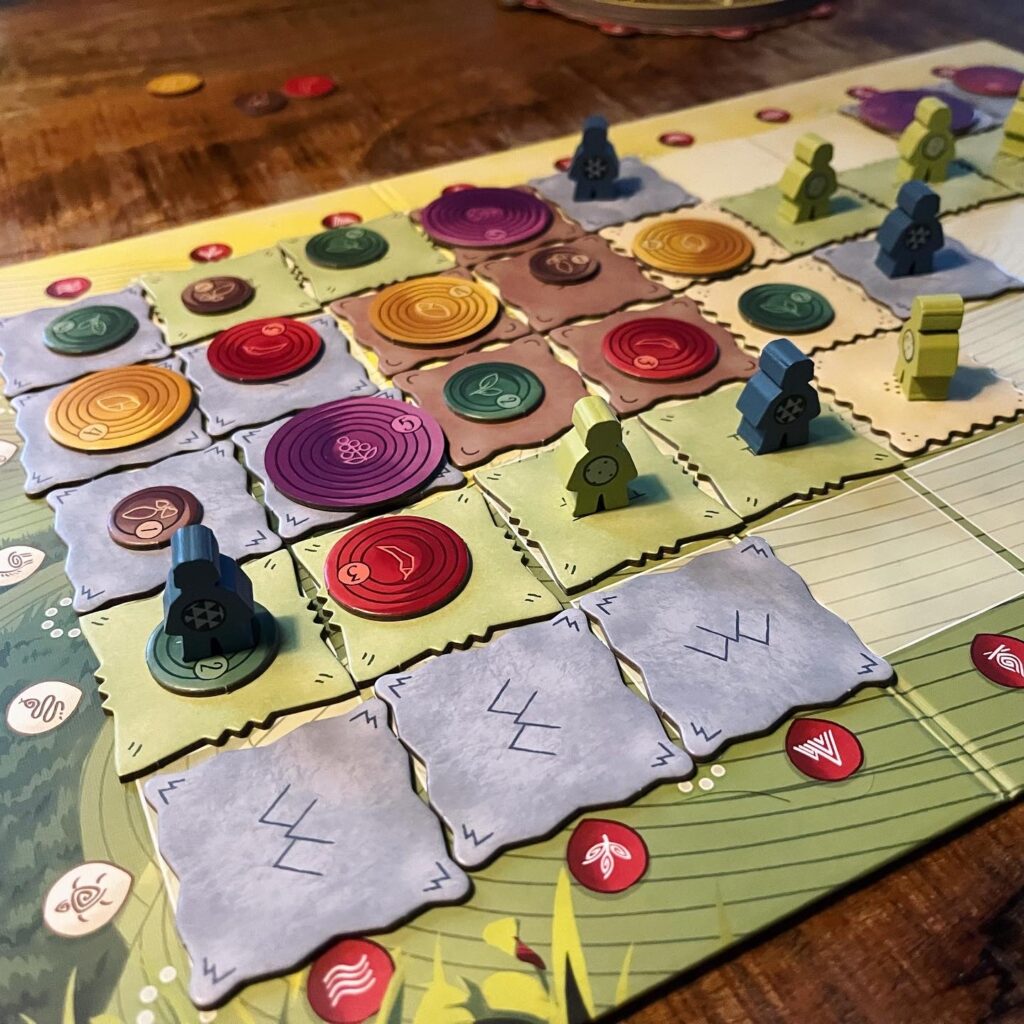
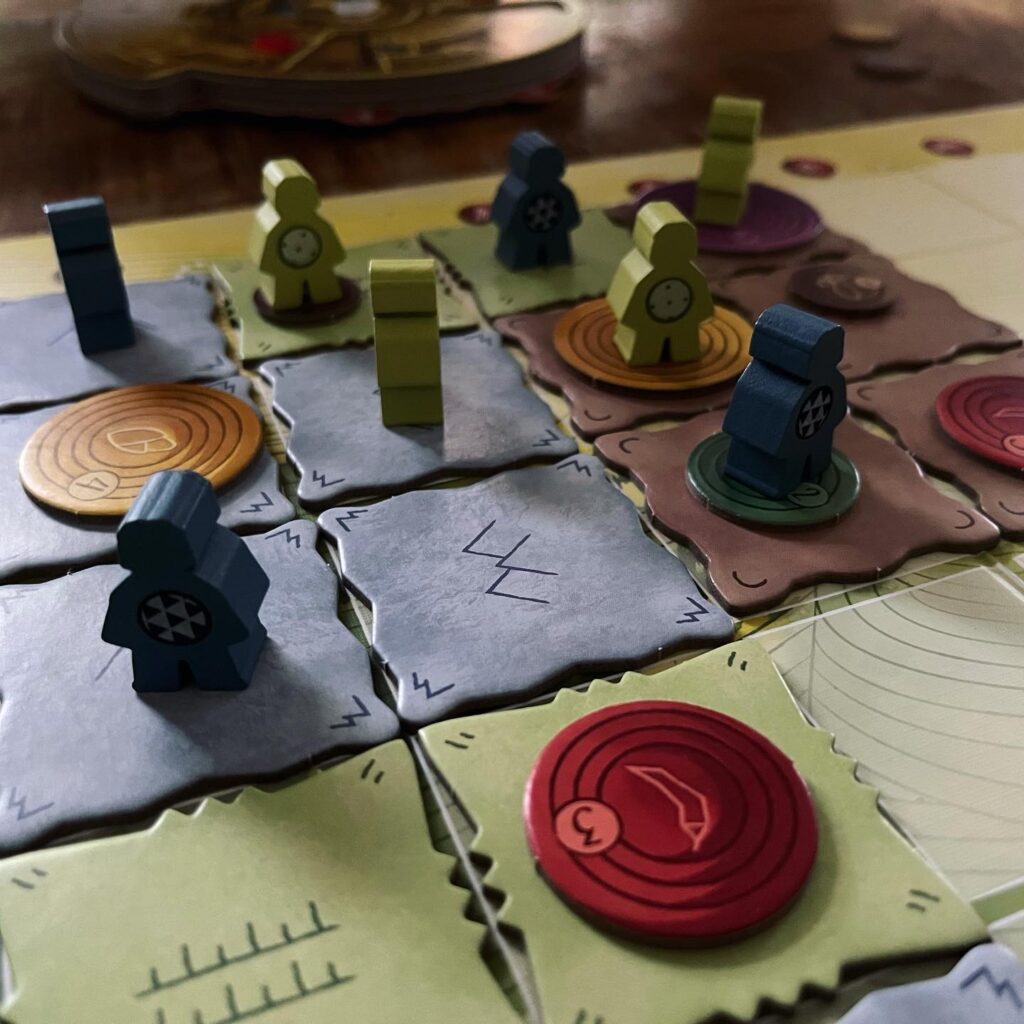
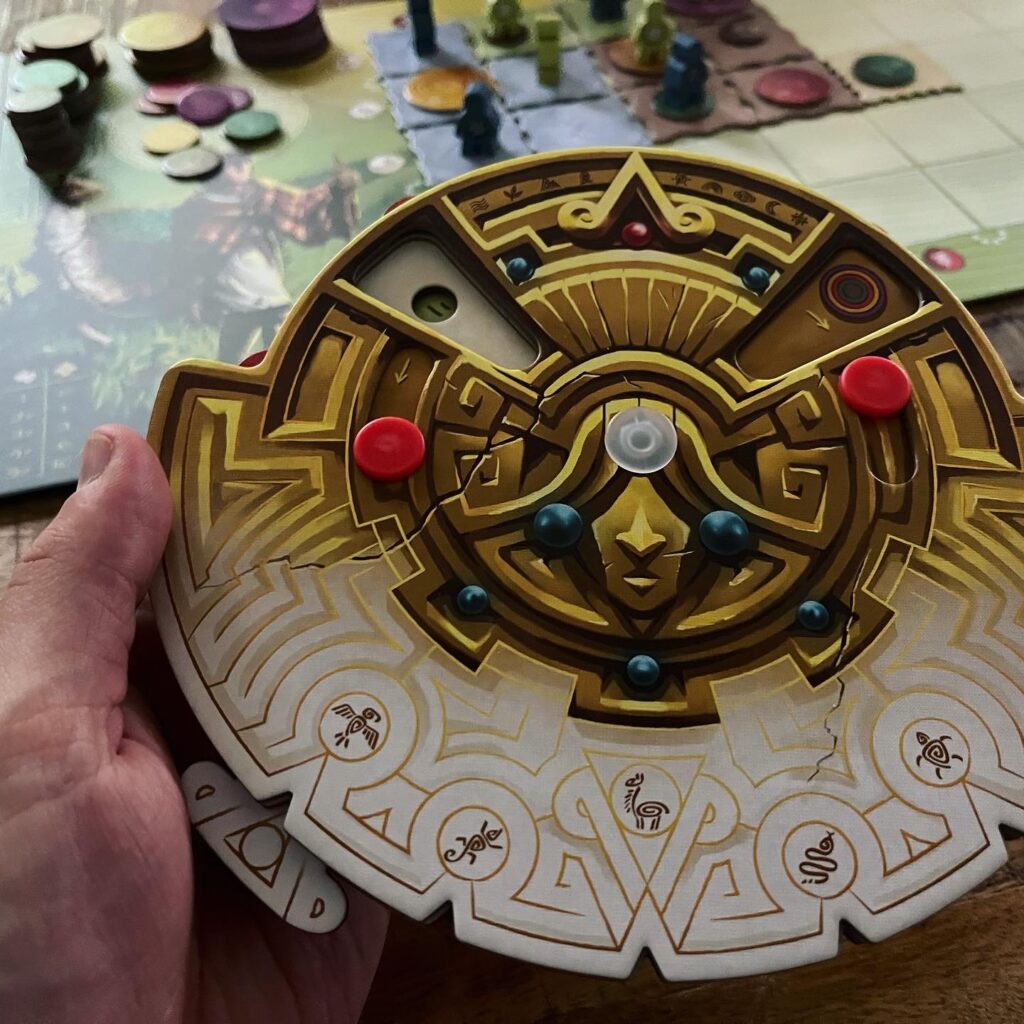
How can you guess where land will be and where crops will be placed? By deducing, of course! In fact, Tiwanaku can be described as a combination between Sudoku, Picross and Minesweeper in board game form. There are a number of rules that players need to be aware of in order to draw the necessary conclusions. There are different regions consisting of the same terrain type. No regions of the same terrain can be next to each other (including diagonally). Regions consist of a maximum of 5 contiguous tiles. The size of the regions determines which crops can grow there. Each type of crop can only occur once on a region. There are five different types of crops, so in a region of 5 terrain tiles, each crop can only occur once. Also, the same crop cannot be next to each other.
Verdict
Tiwanaku is a clever game concept, where fans of deduction can have their fun. Based on the rules and the information that slowly appears on the game board, you can gradually deduce which crops and tiles can (potentially) appear. At the beginning, you may want to take a gamble, but as more terrains and crops appear on the game board, information also becomes clearer and the race to the points begins. Sometimes you want to choose to spread your pawns to different regions to spread your chances, and sometimes you want to explore a region on your own. Sometimes you don’t want to provide information and prefer not to discover certain tiles or crops as they will help your opponent on his way. This concept offers fun opportunities, risks and rewards.
Tiwanaku is definitely for smart minds, but the game concept itself is pretty simple and contains only a few pages of rules. This makes it easy to explain the game to players who don’t like complex board games (complex as in lots of different rules, game concepts and components to consider), but do like solving a complex puzzle. Incidentally, correct deduction feels very satisfying and you feel smarter than the rest if you manage to locate that 5-point crop first.



